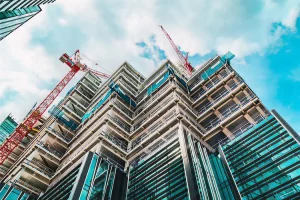
What Developers Really Look for in Façade Partners?
What Developers Really Look for in Façade Partners — and Why It Matters Picking the right façade partner may look easy at first. However, anyone who’s handled a
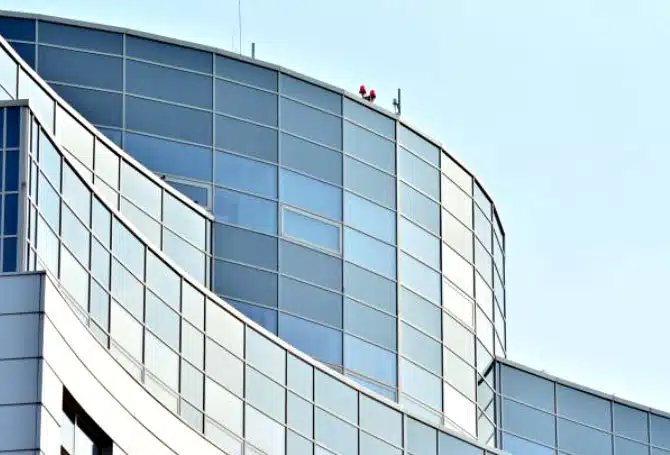
In fire incidents, the casualties caused by inhalation of toxic gases in fires are far higher than those caused by direct burns from flames. According to the fire statistics of the “National Fire Protection Association” (NFPA), up to 75% of casualties are caused by inhalation of excessive toxic gases, which has become the main fatal factor in fires.
Inadequate fire sealing around curtain walls and service penetrations can create pathways for smoke to spread rapidly. Especially in actual projects, due to fluctuations in construction quality, increased service life or later transformation, the sealing structure is prone to loosening, cracking or sealing failure, which seriously threatens personnel evacuation and safety.
At present, most firestop inspections rely primarily on visual checks, and the true state of the sealing cannot be fully grasped, especially the hidden areas are more difficult to detect. To solve this problem, this paper explores a non-destructive testing method suitable for curtain wall systems to evaluate the airtight integrity of fireproof sealing parts, and analyzes the feasibility and judgment basis of its on-site application.
With the increase in urban building density and the improvement of safety standards, non-destructive testing technology will become an important means to improve building fire protection capabilities and prevent the spread of fire.
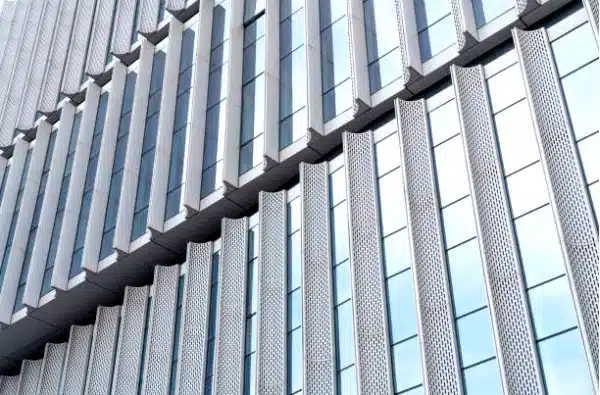
One of the main functions of curtain wall fire blocking is to prevent smoke leakage and spread. Therefore, it is particularly important to detect its airtight integrity. When selecting a detection method for the airtightness of curtain wall firestopping, the following aspects should be considered: safety, non-destructiveness, visibility and quantification.
In terms of safety, if the on-site detection adopts open flame, the risk is extremely high. Besides, it is difficult to ensure the safety of personnel and property. Therefore, any detection scheme involving on-site open fire is not considered.
After excluding open fire detection, the use of smoke method for airtightness detection becomes the best choice. The smoke method can meet the requirements of safety, non-destructiveness, visibility and quantification, and can accurately reflect the airtight performance of curtain wall fire blocking.
For the on-site verification of the smoke method, you can refer to the standard GA/T999-2012 “Hot Smoke Test Method for On-site Verification Method of Smoke Exhaust System Performance”. This standard is applicable to hot smoke tests in buildings with special structures and complex designs, such as atriums, factories, warehouses, shopping malls, complex office buildings, sports and entertainment centers, and densely populated public buildings, tunnels, subways, stations, terminals and other transportation hubs and large underground buildings.
The smoke generating devices used in this standard include smoke sources and smoke guides. The smoke sources include smoke cakes, smoke tubes, smoke cans and other types, which can generate a certain volume flow of smoke.
However, the scope of application of the GA/T999-2012 standard is different from the actual situation of curtain wall fire blocking. Therefore, when the smoke method is used to detect the airtightness of curtain wall fire blocking, the detection plan needs to be specially designed and adjusted to ensure the effectiveness and applicability of the plan.
According to different application scenarios, smoke generators can be roughly divided into the following categories:
☞ Chemical Detection Smoke Generators: mainly used to detect chemical agents, with high performance and portability.
☞ Firefighting Smoke Generators: used for fire scene command, evacuation guidance, etc., commonly seen in fire drills.
☞ Film and Stage Smoke Machines: used for film and television shooting and stage performances to create a specific atmosphere.
In the curtain wall firestop airtightness test, the fire smoke generator is closer to the test needs, such as the smoke cakes, smoke tubes and smoke cans mentioned above. This type of device is often used in fire drills, with a large amount of smoke and easy to observe.
However, curtain wall airtightness testing usually needs to be carried out indoors in existing buildings, so it is necessary to avoid damage to existing decorations, furniture, etc. In addition, fire smoke may trigger the original fire alarm system of the building. Therefore, from the perspective of safety and non-destructiveness, it is not recommended to use fire smoke generators.
In contrast, film and stage smoke generators are a safer and more controllable option. There are many types of such equipment, and it is recommended to give priority to stage smoke machines suitable for indoor environments. Stage smoke machines include mist machines, low smoke machines, air column smoke machines, fog machines, dry ice machines, and liquid ammonia smoke machines.

According to the “Technical Standard for Safety Appraisal of Curtain Walls of Existing Buildings” (SJG112-2022), the selection of test samples should be sampled at a ratio of not less than 1%, and the number of samples should not be less than 5.
For practical implementation, it is recommended to treat each room as an individual testing unit. In cases where there are open-plan office spaces or rooms that are not fully separated, an entire floor can be considered as a single testing unit to ensure feasibility and representativeness.
In the sampling process, in addition to covering typical standard floors and standard rooms, special attention should be paid to special structural areas such as corner positions to cover various different blocking construction practices and ensure the comprehensiveness and accuracy of the test results.
Considering the difficulty of observation, it is not recommended to select the top floor of the building or the floor below the refuge floor as the test sample location to avoid complex on-site operations and affect the quality of inspection.
Before conducting the firestop airtightness test, the lower space of the sealed area must be in a closed state. This space can be an independent room, a complete floor, or a closed unit constructed by artificial means.
Before testing, the parts that may affect the airtightness of the space should be fully inspected and sealed. These parts include but are not limited to:
Some of these penetrations are relatively hidden and not easy to find in routine inspections. Therefore, in order to avoid leakage in non-fireproof sealing parts interfering with the test results, it is recommended to conduct a visual smoke test before the formal test to preliminarily check and deal with potential leaks.
Another way to reduce environmental interference is to build an artificial airtight testing unit. You can refer to the practice of curtain wall airtightness testing and install a sealed box or sealed bag at the corresponding position of the indoor fireproof sealing for testing. This method has the advantage of being less affected by environmental variables and allows for easier pressurization of the enclosure. However, it requires higher-quality testing equipment. In finished interiors, structural elements such as curtain boxes may obstruct access to the firestop area and hinder proper sealing, making this method more difficult to implement.
In order to improve the detection effect of smoke, it is recommended to pressurize the enclosed space to a positive pressure state. Referring to the national standard GB/T 41480-2022 “Smoke-proof Performance Test Method for Doors and Roller Shutters”, the recommended pressure difference is 55Pa.
The smoke exhaust port of the smoke machine should be as close as possible to the fireproof blocking structure. If necessary, local spraying can be performed on the suspected leakage location to enhance the detection effect. Considering that it is difficult to pressurize the entire space, it is also possible to use the method of blowing and pressurizing the local blocking part to achieve the target pressure difference.
After activating starting the smoke generator under the firestop, observe whether there is smoke leakage on the other side. Since the firestop layer has a certain blocking effect on smoke, it is recommended that the observation time be maintained between 15 and 30 minutes to ensure the validity of the test results.
This visual inspection method allows for a basic assessment of whether the seal is intact, but it lacks quantifiable data and is subject to observer bias.
In order to achieve more objective and quantifiable test results, electronic smoke detectors can be introduced for judgment, thereby reducing human errors. However, conventional smoke detectors are more sensitive to some smoke components, which may cause false alarms in the original fire protection system of the building, bringing unnecessary safety hazards. Therefore, it is recommended to use alternative tracer gases for detection.
Among them, carbon dioxide (CO₂) is a safer and more commonly used choice. A dry ice smoke machine can be used as a smoke generator, and a carbon dioxide detector can be used for concentration monitoring. A carbon dioxide detector is a device that can monitor the CO₂ concentration in the air in real time. It usually uses infrared sensing technology and has the characteristics of stable signals and high detection accuracy. Some devices can also display temperature and humidity simultaneously. When the monitoring data exceeds the set threshold, the device will automatically alarm.
In actual applications, the carbon dioxide detector can be fixed at a position 1 to 1.5 meters above the firestop area. And the corresponding warning concentration value can be set to achieve objective judgment and automatic warning of smoke leakage.
Additionally, the local standard DB11/1026-2013 (Design, Construction, and Acceptance Code for Aspirating Smoke Detection Fire Alarm Systems, Section 5.2) provides requirements for sensitivity settings of aspirating smoke detectors. You can refer to the setting principles of smoke alarms and convert them into alarm parameters for carbon dioxide concentration.
It should be noted that carbon dioxide sensors of different brands and models may differ in setting methods and operating procedures. When using them, refer to the equipment manual for operation.
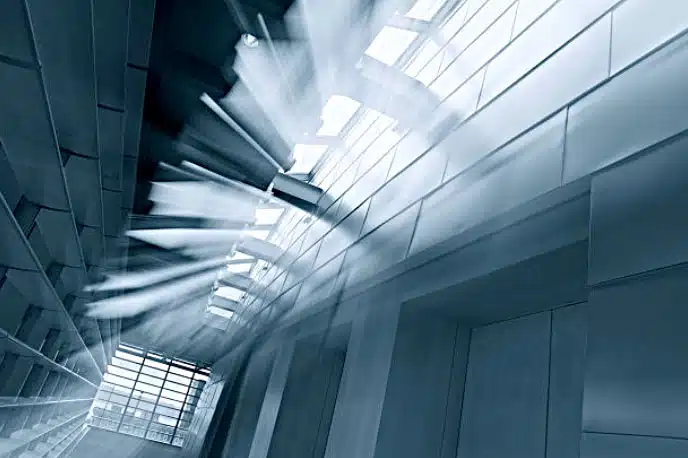
The on-site testing method for firestop integrity in curtain wall systems proposed in this paper is not limited to façade applications. It can also be widely applied to other critical areas in buildings where airtight sealing is required.
For example, during the main structural construction phase, various types of technical openings often occur, such as:
In addition, indoor renovation or retrofit projects may leave behind various unsealed openings, including:
When these openings are in areas that need firestop sealing, or when the space has high requirements for gas sealing performance, this detection method can be used to effectively detect them.
Regardless of the sealing material or method used (such as fireproof foam, firestop pillows, sealant, etc.), the sealing effect can be verified by this method. With the help of visualization or quantitative methods, sealing loopholes can be discovered in time at the early stage of the problem, safety hazards can be avoided. And the overall quality of the building in terms of fire protection and safety performance can be guaranteed.
With the continuous improvement of building fire protection requirements, curtain wall firestopping, as an important barrier to prevent the spread of smoke, has become increasingly concealed and critical. This article proposes a non-destructive testing approach with controlled smoke method as the core, combined with scientific site selection, reasonable closure, local pressurization and other means, to provide a set of feasible and operational testing solutions for engineering practice. Although there are still some challenges in equipment adaptation, on-site implementation and quantitative judgment, with the advancement of technology and the improvement of standards, this method is expected to become an important supplementary means of fire quality assessment of curtain wall systems in the future. Continuous exploration of more efficient and intelligent testing methods will be an important direction to improve building safety.

What Developers Really Look for in Façade Partners — and Why It Matters Picking the right façade partner may look easy at first. However, anyone who’s handled a
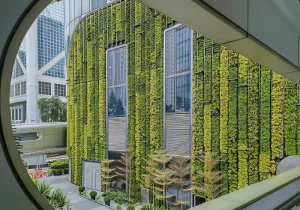
Green Building Trends: Aluminum vs. Stainless Steel for Living Façades As green building shifts from trend to standard, the building’s “skin” is undergoing a transformation.

Burj Al Mana Tower: The Story Behind Its Complex Façade and Engineering Rising over Doha’s West Bay, the Burj Al Mana Tower has a story

Every Detail Counts: Understanding SunFrame’s Product Pricing In the world of high-performance windows and curtain walls, every product has a clear cost logic behind it. At